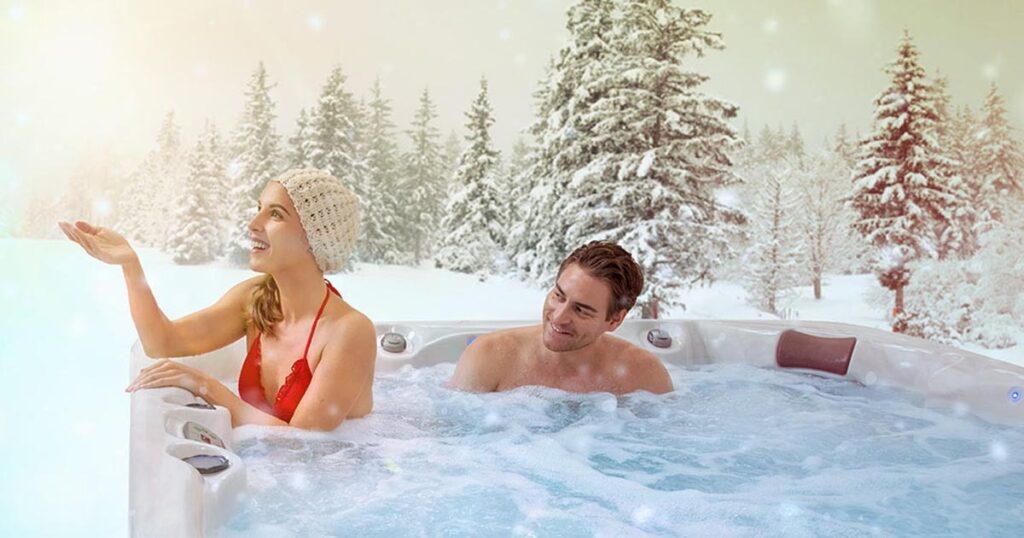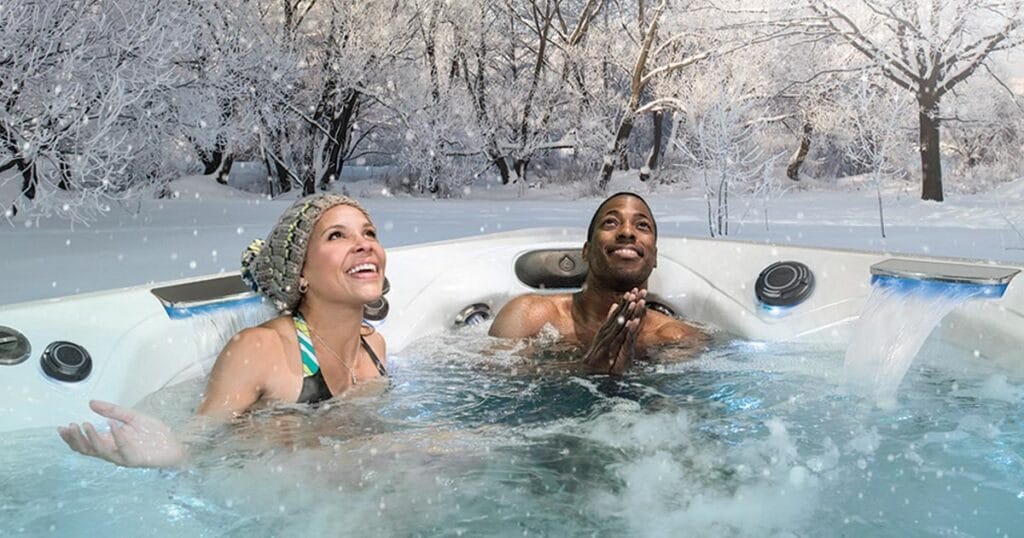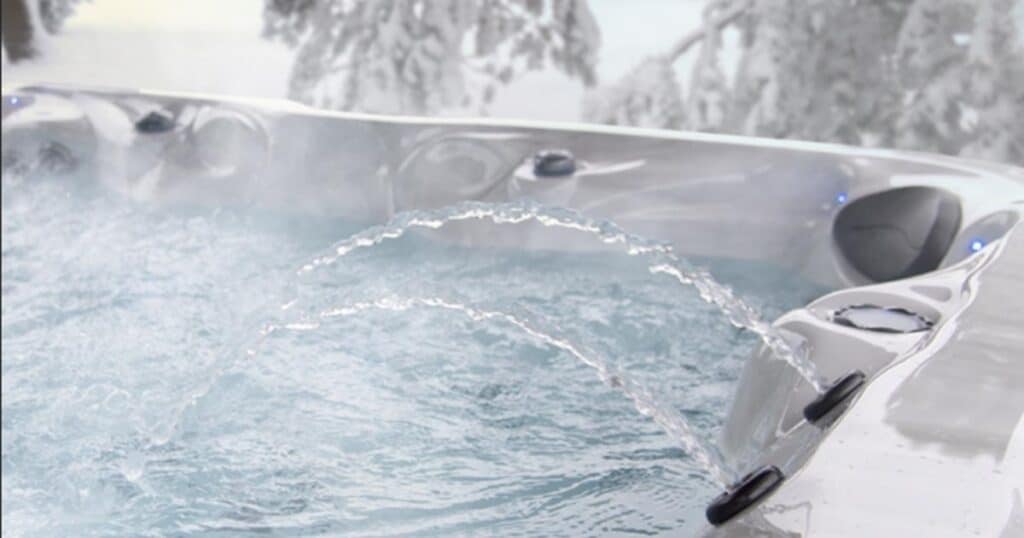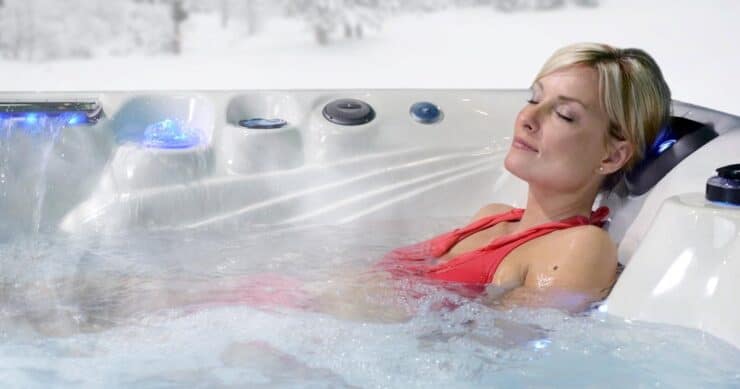The days are getting shorter, the nights are getting colder, and the time is ticking on enjoying time in your backyard.
You just want to be warm. You could hold a mug of tea, turn up the thermostat, or bundle up in your coziest hat and scarf. But there is a more relaxing way to warm up this winter — a hot tub by Master Spas.
Hot tubs are a great way to take the chill out of winter without adding layer after a layer. The water can be set up to 104 degrees, warm enough to make you forget about the freezing temperatures.

Enjoying Your Hot Tub in Winter
Most people do not head out into the cold of winter in only a swimsuit. But if you are going to enjoy your hot tub by Master Spas, year-round, you might have to step out the backdoor in just that — a swimsuit.
You can make the experience of getting into your hot tub just as relaxing as soaking in it. A few amenities can enhance your Master Spas experience.
Heat Lamp. A patio heater, placed in a safe space, can make your patio more comfortable on even the coldest nights. An electric heater can be mounted on the ceiling, keeping a large area of your patio warm. You won’t even notice the cold as you get in and out of the hot tub.
Towel Warmer. Wrap yourself in warmth after you have finished soaking. A warmer will keep your towels dry and toasty so that you can avoid the post hot tub chill. Also think about a coat tree or hooks to hang your robe, too.
Snow-Melting Walkway. Depending on your hot tub installation, you might want to consider a snow-melting walkway. This mat will offer a slip-free to walk to and from your hot tub in the winter.

Winterizing Your Hot Tub
Master Spas hot tubs are designed so that they can be used year-round, no matter where you live. Full-foam insulation and a high-density cover help keep heat in (and the elements out) so that you can soak even on the coldest days.
In fact, some owners think that winter is the best time to enjoy a hot tub. It can be relaxing to soak in the warm water while snow gently falls.
But some people do prefer to “close up” their hot tub for the season — a process otherwise known as winterizing.
Winterizing a hot tub involves draining your hot tub and powering it down. If there’s any water left in your hot tub, especially in the plumbing, freeze damage can occur. Use a shop vac in “blowing mode” to remove water trapped in the lines. Just insert the hose into the nozzle of each jet and blow the trapped water from the lines into the interior of the spa.
When you winterize your hot tub, it is also a good idea to protect your hot tub with a tarp. Your hot tub cover is great at keeping in warmth but precipitation can make its way into the hot tub and build up. The tarp will act as a barrier, preventing precipitation from building up during the winter months.
If you decide to winterize your spa, it is important to periodically check the spa to make sure water is not entering the spa through or around the spa cover. No one wants to discover that water has built up over the winter months and deal with freeze damage repairs.
Rather than winterizing your hot tub for the colder months, consider taking advantage of your investment.

Using Your Hot Tub in the Winter
It is important to keep your spa in mind if you have it installed outdoors and subject to freezing temperatures.
During these cold days, check on it often throughout each week, even daily, to ensure things are operating as expected. Just like if your home heater goes out, you’ll want to quickly take actions to prevent freezing of the water within the lines and the damage that it causes.
It’s important to safeguard your home during a power outage — especially in the winter. You want to be able to stay safe, warm, and prevent unnecessary damage. If you have a power outage, it’s important to check on your spa and protect it from freezing. The hot tub cover will keep the water from freezing, for at least a few days.
While the body of water may not freeze for several days, the plumbing and equipment within perimeter cabinet areas can start to freeze in a couple of hours. A simple, small ceramic desk-type heater is great to have around in the event of an outage or even if an unfortunate equipment failure occurs. The heater can be placed inside the cabinet area to circulate warmth and prevent freeze damage.


